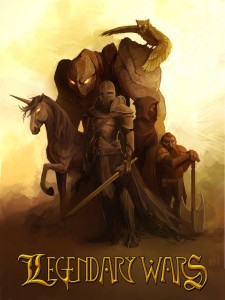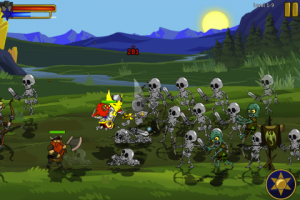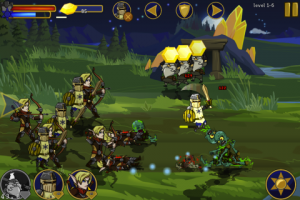 So tell us the story behind Liv Games. How did this eight-member game development company get its start? Has everyone had prior experience in the videogame industry, or is this the first commercial outing for some – or all – of you?
So tell us the story behind Liv Games. How did this eight-member game development company get its start? Has everyone had prior experience in the videogame industry, or is this the first commercial outing for some – or all – of you?
I worked for EB Games as a sales and marketing manager for six years, but I always knew I wanted to get into game development. After EB Games merged with GameStop I went back to school and earned my marketing degree. I applied at a few studios but never a call back. I graduated at the start of the recession and it hit close to home.
I started Liv Games when my dad’s company went under back in September of 2009. I challenged him to learn Objective-C and Cocos2d to help me create a prototype of a space physics music puzzler called Protostar. The game’s premise was to create the universe out of constellations using gravitational pulls. With every star gained, a musical instrument would be added to create a symphony.
I got two good friends on board. Felix, who currently works at a huge game company you all know and love, did some great concept art. In October of 2009 we went to my friend Casey’s garage to listen to the track he created it for it. We were blown away. We all looked at each other and said we need to make an epic battle game to match the amazing music. Cartoon Wars was a big hit at the time and there were a bunch of doodle and stick figure games, but no real detailed game with huge battles.
 After working part time on it for over four months, we had a prototype and created a video to help recruit devs. The game looked very different back then. I knew I would need to hire more talented people to get the game to the quality I wanted. A lot of people were out of work so I put up an ad and did some interviews. I think I got lucky with Kristin, our lead artist, and Tom, the animator. Both were out of work, and both were amazingly talented.
After working part time on it for over four months, we had a prototype and created a video to help recruit devs. The game looked very different back then. I knew I would need to hire more talented people to get the game to the quality I wanted. A lot of people were out of work so I put up an ad and did some interviews. I think I got lucky with Kristin, our lead artist, and Tom, the animator. Both were out of work, and both were amazingly talented.
In March of 2010, I shopped the prototype around to different developers. Tom D. had just released Warlord: Call to Arms and Lam had some mini games out. After talking to them for over a month I was able to convince them (thanks to the success of Trenches and Plants vs Zombies) that the iOS platform was ready for a game like Legendary Wars.
Hard to make a long story short.
Why did you choose the iOS over competing mobile platforms for your first release? Did advances in iPhone technology throw any monkey wrenches into the development process?
Going with iOS was an easy choice. I got myself an iPhone as a graduation gift and loved it immediately. I knew it would replace mobile gaming because everyone has their phone on them. I also liked the fact that Apple made the development accessible for independent developers. Hearing stories like iShoot was also inspiring.
When we started Legendary Wars there was no iPhone 4 or concept of Retina. The iPad was released so we designed the characters with iPad in mind. We knew we wanted to have fantastic graphics and animation from the start. I think the biggest worry for us was texture memory. Since we had no skeletal system for our animations, everything was created frame by frame and some characters had over 100 frames of animation, so we were always worried about the amount of textures we were loading at once. We are still working on reducing loading time but thankfully we were able to get the game working on older devices.
 Most who play it will agree that Legendary Wars has an incredibly polished feel, so we must ask: just how long did its development process last? How did the team stay afloat during that time – did you seek out a financier, draw on savings, or was the project something the members of Liv Games usually worked on during after-hours?
Most who play it will agree that Legendary Wars has an incredibly polished feel, so we must ask: just how long did its development process last? How did the team stay afloat during that time – did you seek out a financier, draw on savings, or was the project something the members of Liv Games usually worked on during after-hours?
Full development didn’t start until April and wrapped up in January, so around ten months. But as I stated earlier, we took four to five months to make the prototype before that. In September of 2010 I decided to quit my full time job at a mortgage firm and solely concentrate on Legendary Wars.
Legendary Wars was entirely self-funded by me. I was able to recruit through persuasion and pure luck. What I did do differently than most studios was to give everyone a profit-sharing stake in the game, so the success of the game was directly dependant on the effort everyone put forth. About half the team was part time and half was full time through different stages of development.
 Was Legendary Wars always intended to be an RTS/Sidescroller/RPG mashup, or did the core design undergo major changes during its development cycle? How did you finally decide on this blended, genre-defying design?
Was Legendary Wars always intended to be an RTS/Sidescroller/RPG mashup, or did the core design undergo major changes during its development cycle? How did you finally decide on this blended, genre-defying design?
The original design was Action-RTS with RPG elements that drew influences from the old 16 bit and PC games we used to love playing as kids. I really wanted to throw tons of variety at the player to keep the gameplay fresh and new. The sidescrolling running levels were added about half way through development. I was a huge sidescrolling fan growing up and thought it would be fun to include a mix of running/sidescrolling/shooting levels to break up the action.


